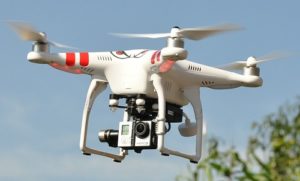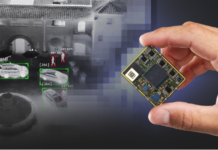
Absolutely thrilling, to have a machine as your friend is it not? Every one of us wants to build a J.A.R.V.I.S like Tony Stark. But what if we build the drones like what Hammer Industries did in Iron Man 2? The machine cannot be taught what is right or wrong. But, the world is quickly moving towards unmanned aerial missions using drones. Drones, or more collectively Unmanned Aerial Vehicles- are gizmos which can be controlled through radars from the ground. With potential advantages seen from the outlook, they pose their challenges that are crucial for a higher success rate, and more to prevent a political debacle due to a mishap, not intended to happen.
What is a UAV for warfare and how do they work?
A UAV for warfare is also called a UCAV- Unmanned Combat Aerial Vehicle, and as per Wikipedia, they are autonomous to some level, having a real-time monitoring. The earliest idea was developed in the year 1940, by Lee Dee Forest and U.A. Sanabria. However, the world has taken the primitive idea and developed it manifold. The drones are often used for reconnaissance, surveillance, and combat. If the enemy basecamp tracks and shots one down, another drone goes up to do the work in no time. A UAV acts like an airplane- it consists of antennas, cameras in the front and rear, electronic control module, optical and infrared sensor, ice detector, transceivers, video encoder, and batteries and power supply. The controller, can alter the speed, altitude, and direction of the drone, and navigate remotely, using the information derived from the sensors, and antenna transmission. The fuselage is made of Kevlar, used for its resilience to low temperatures and high strength capabilities. Missiles loaded into the aircraft, are targeted towards enemy camps and dislodged automatically.
As it comes with any warfare, there are a set of protocols, to abide by.
International Laws
The International Humanitarian Law governs the use of drones, as with any other combatant weapon. According to the IHL, the drone can only be deployed for purely material purposes. If it finds itself in proximity to performing a high rate of civilian loss of life and property, the drones cannot be used. IHL places restrictions on warfare, for the welfare and value of human life. Thereupon, the Hague Rules on Aerial Warfare gives an ultimatum on indulgence in aerial bombings not associated with military purposes. Seemingly appropriate to regulate the loss of infrastructure and lives, a certain level of destruction is bound to occur. As a result, the lower and upper limits of the laws are not clearly defined. These laws are not litigated by the International courts yet. There is a principle of distinction, known as the cardinal rule of the IHL by the ICJ. The attacks which cannot discern from the lawful and unlawful targets, should not be undertaken.
In the Nuclear Weapons Advisory, the Court clearly stated that countries must never use weapons which cannot discern between civilians and targets. This, of course, casts the shadow, on the major objective of drone. They are usually employed in places where a man cannot have access to, and usually extremely dangerous for venturing into. This poses a dilemma in the precision of weapons instilled in the drones, for they are bound to harm innocent lives, unintentionally.
Advantages posed by using Drones
The act of insurgency is fulfilled to its full potency by the UCAV.
- You save a life and families: No republic wants its army dead. No family wants their son/husband/father dead. Drones can reduce the sense of skepticism in the families to a certain level, on the life of their soldier in the job. Remotely controlling and doing the same job a fighter jet does, without loss of any life sounds really cool.
- Sleuth: A usual jet fighter plane cannot reach the lowest of heights or the most crook of corners for surveillance and spying. A drone can easily manage to relay sensitive information from the placed unbeknownst to human exploration. They can sneak stealthily to the closest of horizons of enemy base camp. With the inclusion of sensors like infrared, bugs and video encoders, the spying is efficient.
- High revenue, low cost: Obviously, the purchase and maintenance are a lot easier and cheaper than any other aerial combat vehicle.
- He does not get tired: Comparing a soldier and a combat vehicle, it is evident that the energy level of the soldier is bound to drop soon. But, a drone can stay up in the air and need not have “ sleep issues”.
- Accurate: When maneuvered rightly, the missile can hit the right target from a good far distance, for which a soldier would have to reach close proximity, threatening his life.
The Cons of Drones
- He cannot communicate: In case of secret operations, the involvement of civilians is sometimes required. However, the drone cannot communicate with people to gather information.
- He does not have instinct: A soldier has “gut feelings”. In certain situations, if the Plan A does not work, he can think of a Plan B, immediately. Alternatively, he can act on his instincts. He is not rigidly programmed. On the other hand, a completely autonomous drone does not have a brain of its own. It is a mere puppet of the designer and programmer. As a result, the drone cannot use its discretion to judge. Althemore, instinctive actions cannot be acted upon. For example: if the enemy base camp, holds a fugitive, a soldier can immediately work upon the situation. But the drone is incapable of the same.
- Regulation on drone warfare: Drones are not perfectly regulated. If they land in the wrong hands, the consequences are unimaginable. Mostly, low flying drones are associated with terrorist activity. Hammer Industries proved it right.
- If a drone is shot down, it takes time for the next drone to take its place. Meanwhile, there is a possibility of an inevitable attack.
- Lack of Judgement: If the firing is out of the aim, there will be civilian losses, which are prohibited by the IHL. Many a time, civilians are against drones for this very reason. Assuming that they are an invasion force, commoners try to sabotage them, destabilizing peace.
“It may seem feasible to introduce AI in UCAV as well. But the enemies can manipulate it to behave in what is called- Stockholm Syndrome. What can be guaranteed, finally? We had heard of human invasion. But, technology invasion is the new word in town. In no time, should we reconsider our decisions about machines being able to make judgments? I feel it is the time- upon our judgment, to work on the implications of the troubles that would be dawning on us, sooner or later.”



















